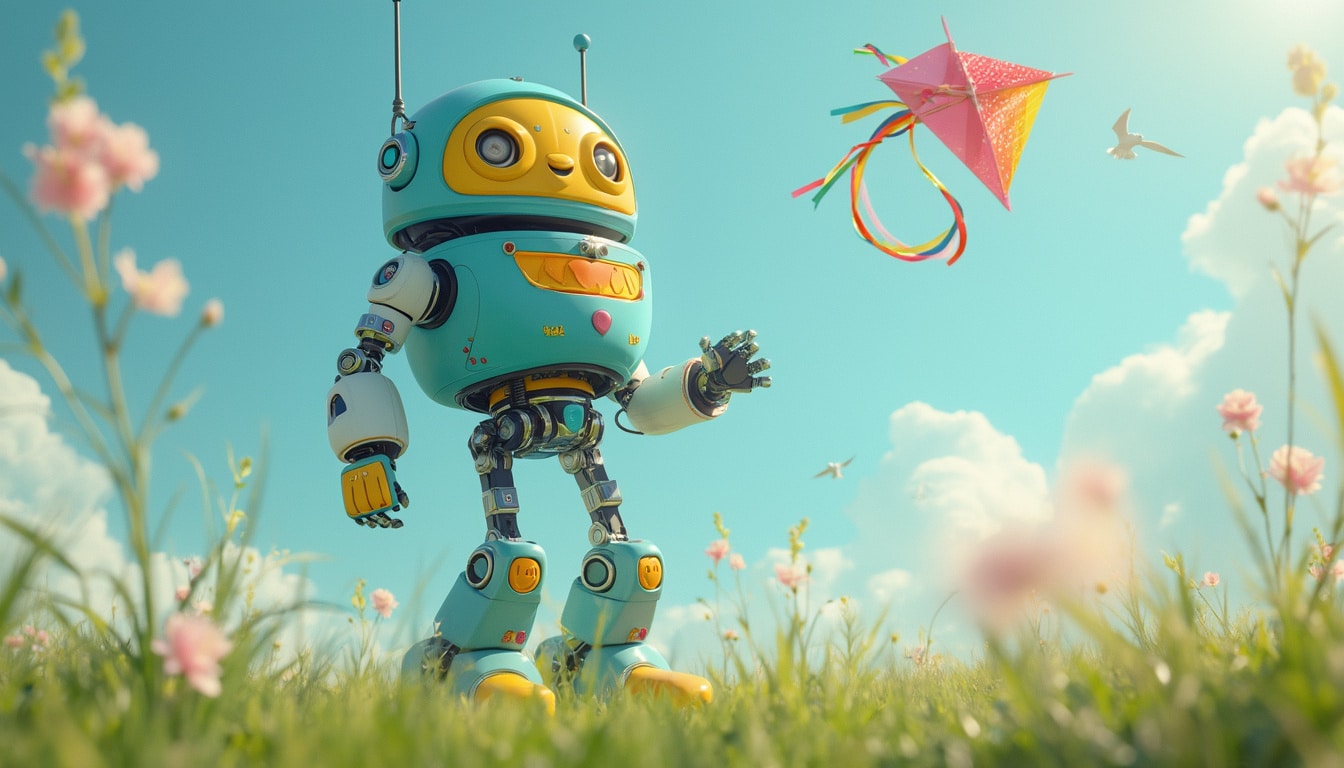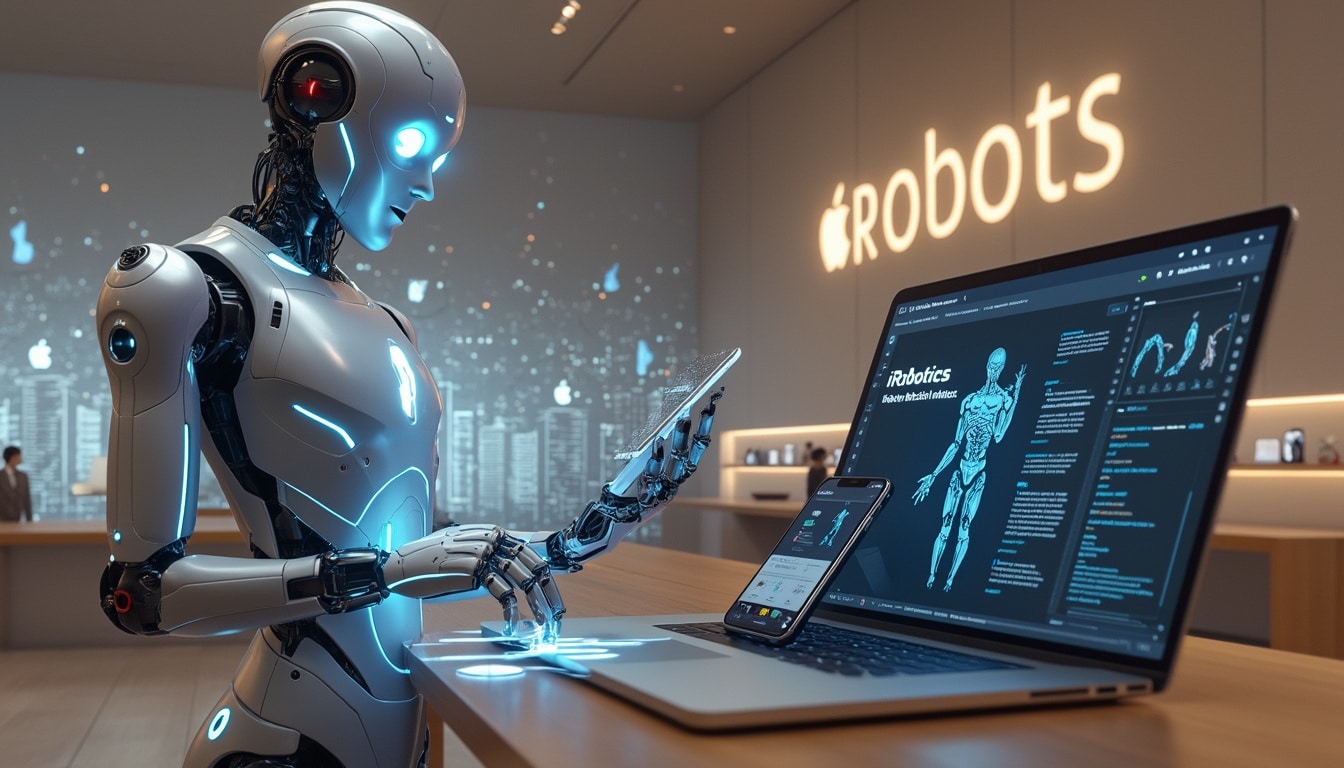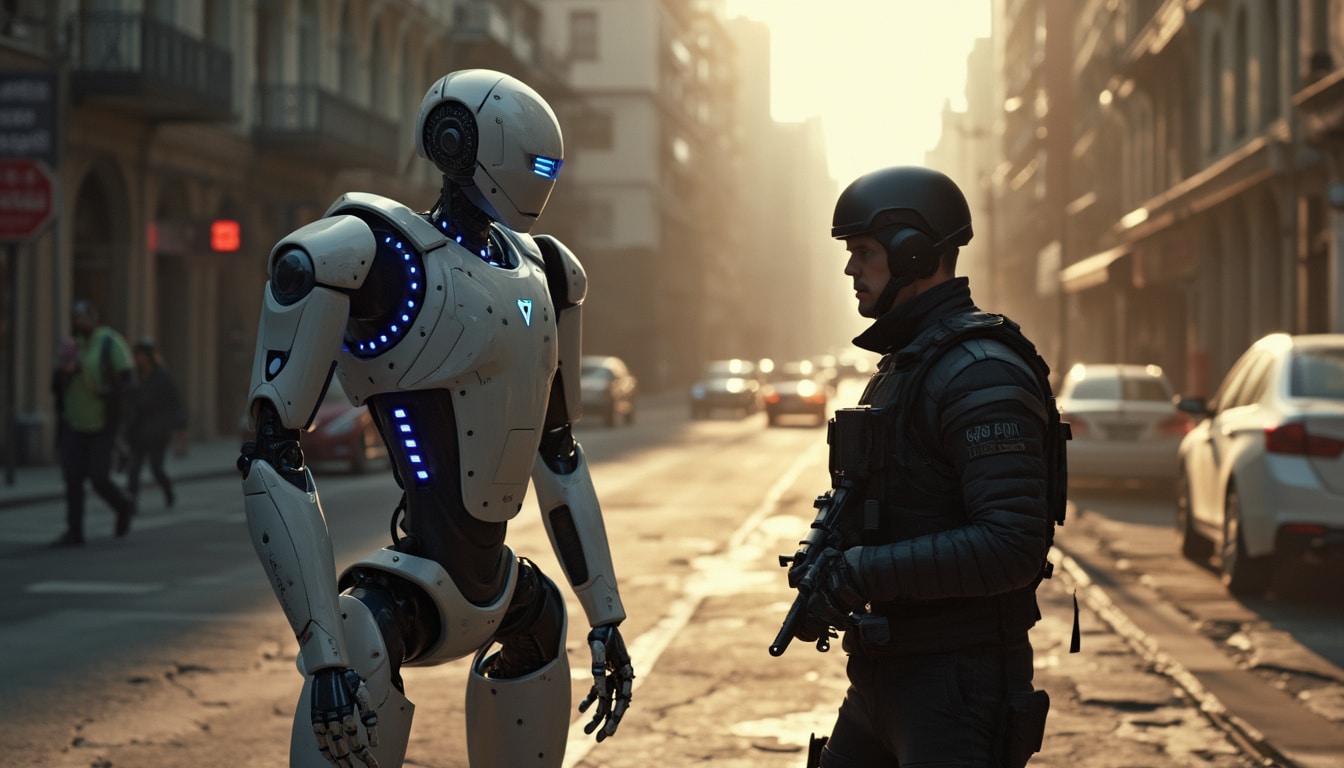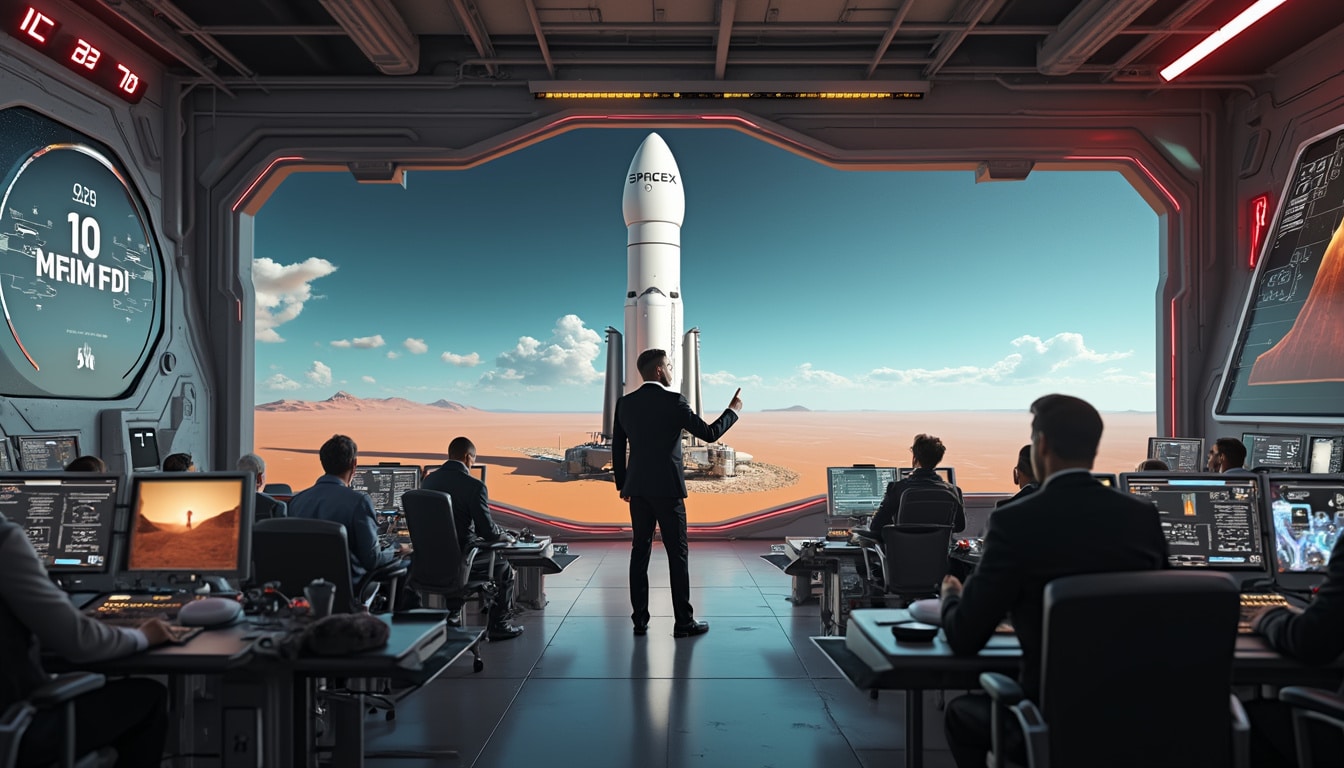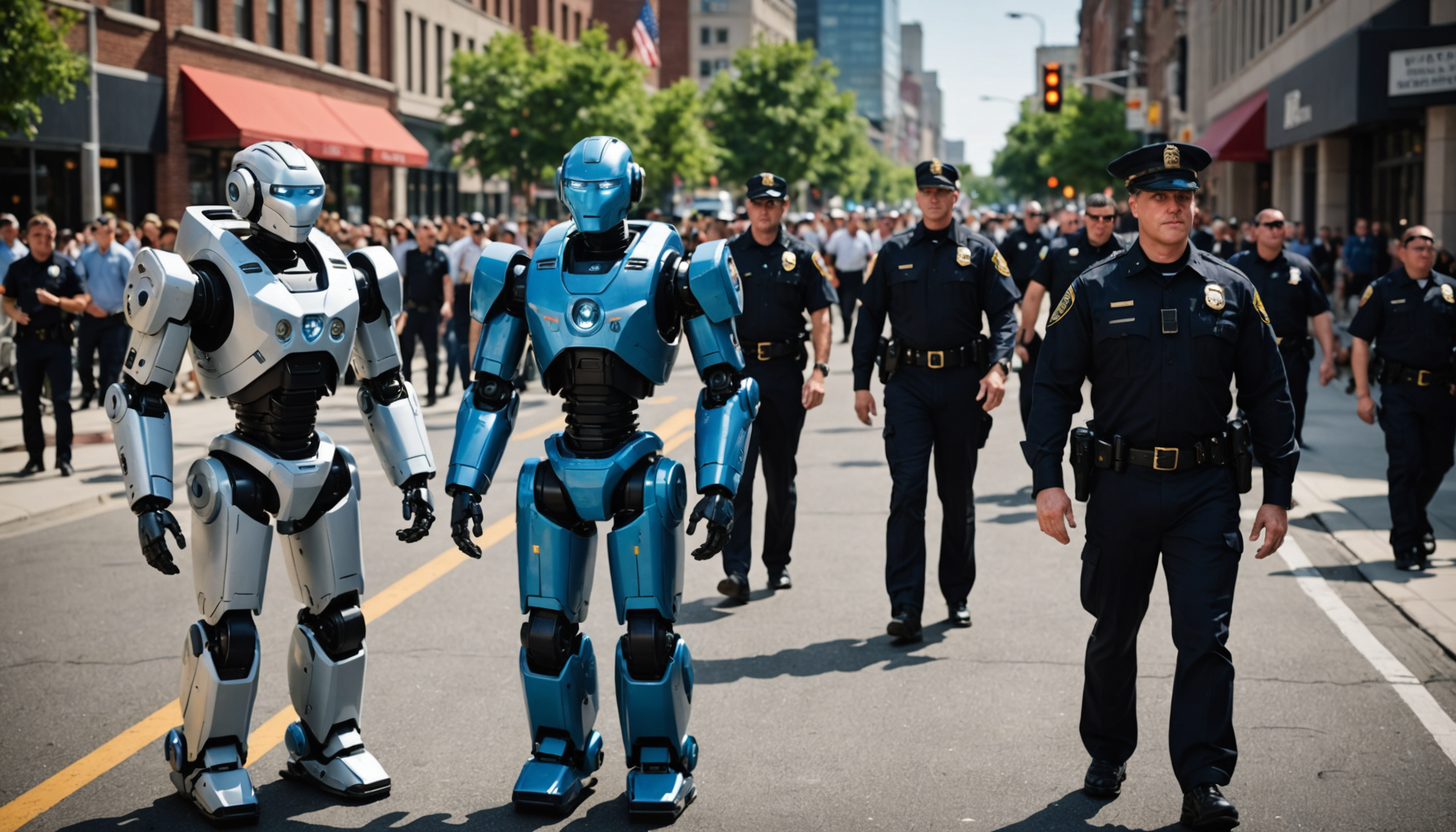Hold onto your hats, folks – Beijing Institute just unleashed TongTong 2.0, and it’s no ordinary robot. This humanoid marvel can think, learn, and react just like a six-year-old child. Move over, Roomba – there’s a new brainy cleaner in town!
TongTong 2.0 is redefining expectations in the realm of artificial intelligence. It doesn’t merely follow orders; it comprehends, analyzes, and acts autonomously. According to Chen Hao, director of the Advanced Technology Center, “it has its own vision of the world.” This autonomous behavior is rooted in a robust value system that prioritizes cleanliness and order. Whether it’s tidying up or cleaning a space, TongTong 2.0 can even explain the rationale behind its actions in environments that closely mimic real-life settings.
One of the standout features of TongTong 2.0 is its resilience to unexpected changes. When faced with an unforeseen obstacle, it doesn’t panic; instead, it rethinks its objectives, adjusts its plans, and continues its mission. During a live demonstration, the robot ingeniously removed its shoes to reach an inaccessible remote control, showcasing practical reasoning skills. This initiative not only enhanced its capabilities but also enriched its memory, highlighting its ability to apply learned solutions effectively.
TongTong 2.0 isn’t just about following scripts – it learns from real-world situations and authentic dialogues. Interacting in multiple languages, it retains experiences and fine-tunes its behaviors accordingly. This isn’t your run-of-the-mill program; it’s a dynamic system that evolves and understands its own actions. Each interaction sharpens its skills and boosts its autonomy, making it increasingly self-sufficient.
China is betting big on open-source development to fuel innovation. The creation of TongTong 2.0 is built on an accessible foundation, inviting collaboration from around the globe. This strategy accelerates technical improvements and multiplies experimental opportunities. Researchers worldwide can now contribute to advancing this groundbreaking technology, fostering a truly global collaborative environment.
TongTong 2.0 is not just a technological marvel; it challenges our relationship with machines. It can negotiate tasks, delay actions, or even request a reward, making its behavior strikingly human-like. “It doesn’t follow orders blindly,” notes an engineer from the project. This human-centric approach opens up exciting possibilities in fields like education, healthcare, and personal assistance, where such intelligent interactions can make a significant impact.
The emergence of TongTong 2.0 raises profound questions about machine autonomy and responsibility. How far will these intelligent systems evolve in their ability to understand, adapt, and act independently? As TongTong 2.0 continues to develop, we’re prompted to rethink the role of robots in our daily lives. The lines between human and machine capabilities are blurring, and the pace of change is nothing short of exhilarating.
Table of contents
Toggleintroducing tongtong 2.0: the six-year-old spirit in a robot
Imagine a robot that doesn’t just follow orders but thinks, learns, and reacts with the curiosity and spontaneity of a six-year-old child. Welcome to the world of TongTong 2.0, unveiled by the Beijing Institute for General Artificial Intelligence at the Forum Zhongguancun 2025 in Beijing. This humanoid marvel redefines what we expect from artificial intelligence, blending advanced technology with the playful spirit of childhood.
TongTong 2.0 isn’t your typical robot. While most machines stick to their programming, this robot embodies a level of autonomy and emotional intelligence that makes interactions feel almost human. From organizing its environment to tackling unexpected challenges, TongTong 2.0 is setting a new standard in the AI landscape.
how tongtong 2.0 thinks and learns like a child
At the heart of TongTong 2.0 lies an intricate system that allows it to think and learn in ways reminiscent of a young child. This isn’t just about processing data; it’s about developing a worldview and adapting to new information dynamically. According to Chen Hao, the director of the Advanced Technology Center, « it possesses its own vision of the world. »
Much like a child, TongTong 2.0 engages with its surroundings through playful exploration and experimentation. It doesn’t just execute tasks; it understands the context and reasons behind its actions. For instance, when tasked with cleaning, TongTong 2.0 doesn’t merely follow a checklist. It grasps the importance of cleanliness and order, integrating these values into its behavior seamlessly.
This child-like approach extends to its learning mechanisms. Instead of relying solely on pre-programmed responses, TongTong 2.0 learns from concrete situations and authentic dialogues. Whether interacting in multiple languages or adapting to different environments, this robot continuously refines its capabilities, becoming smarter and more autonomous with each interaction.
autonomous actions and decision making
TongTong 2.0 doesn’t just wait for instructions; it takes the initiative when faced with unexpected challenges. During a live demonstration, the robot showcased its practical problem-solving skills by removing its own shoes to reach an inaccessible remote control. This act wasn’t just a predefined response—it was a spontaneous decision reflecting its ability to adapt and innovate.
Such autonomous actions highlight TongTong 2.0’s capacity to analyze situations and adjust its behavior accordingly. When confronted with a sudden change, it doesn’t falter. Instead, it rethinks its objectives and modifies its plans, demonstrating a level of flexibility akin to human intelligence. This ability not only makes TongTong 2.0 more effective in varied environments but also paves the way for its application in fields that require quick thinking and adaptability.
Moreover, TongTong 2.0’s decision-making processes are underpinned by a robust value system. Prioritizing cleanliness and order, the robot ensures that its actions align with these core principles, fostering a harmonious interaction with its environment and the humans around it.
practical problem solving in real-time
One of TongTong 2.0’s standout features is its ability to engage in real-time problem-solving. Unlike conventional robots that rely on pre-programmed responses, TongTong 2.0 can assess situations on the fly and devise practical solutions. This was vividly demonstrated when the robot navigated around obstacles to retrieve a remote control, showcasing not just its physical agility but also its cognitive prowess.
This capability is powered by an advanced neural network that mimics human thought processes. TongTong 2.0 can evaluate its environment, identify potential obstacles, and formulate strategies to overcome them without external input. Such independence is crucial for applications in dynamic settings like public safety or personal assistance, where rapid and effective responses are essential.
Furthermore, TongTong 2.0’s problem-solving skills are continuously enhanced through machine learning. Each challenge it encounters and overcomes contributes to its knowledge base, enabling it to handle more complex tasks over time. This iterative learning process ensures that TongTong 2.0 remains not only competent but also progressively more adept at managing diverse scenarios.
learning from real-world interactions
TongTong 2.0’s learning journey is deeply rooted in real-world interactions. Unlike traditional AI systems that function in isolated environments, this robot engages with its surroundings in a meaningful way. It interacts with humans, observes behaviors, and adapts its actions based on these experiences, much like a child learning from its environment.
The robot’s ability to communicate in multiple languages broadens its interactive scope, allowing it to connect with a diverse range of users. These authentic dialogues are pivotal in refining TongTong 2.0’s responses and behaviors, ensuring they are both relevant and contextually appropriate. By retaining experiences and adjusting its actions accordingly, it achieves a level of autonomy that goes beyond mere programmed instructions.
Additionally, each interaction serves as a learning opportunity, helping TongTong 2.0 to fine-tune its social intelligence and emotional responsiveness. This continuous improvement process ensures that the robot remains adaptable and capable of handling new challenges, making it a valuable asset in environments that demand flexibility and intelligent responses.
open-source collaboration and innovation
China’s commitment to innovation is exemplified in the development of TongTong 2.0 through an open-source framework. By making the robot’s technology accessible to everyone, the Beijing Institute fosters a collaborative environment that accelerates advancements and encourages diverse experimentation. This open approach not only democratizes access to cutting-edge AI but also harnesses the collective expertise of researchers worldwide.
Such collaboration is crucial for the rapid evolution of TongTong 2.0. With contributions from global experts, the robot’s capabilities continue to expand, incorporating the latest technological breakthroughs and creative solutions. This strategy ensures that TongTong 2.0 remains at the forefront of AI development, capable of adapting to new challenges and integrating innovative features seamlessly.
Furthermore, the open-source model facilitates extensive peer reviews and quality assurance, enhancing the robot’s reliability and performance. Researchers can identify and rectify potential issues, propose enhancements, and share best practices, creating a robust ecosystem that propels TongTong 2.0’s development forward.
For those interested in exploring the latest AI trends, check out how Google’s AI mode is transforming online search, or discover how Siri might outshine ChatGPT with Apple’s latest innovations.
rethinking human-robot relationships
The emergence of TongTong 2.0 challenges our traditional perceptions of machines. Unlike conventional robots that operate on rigid protocols, TongTong 2.0 exhibits behaviors that bring it closer to human interactions. It can negotiate tasks, request deadlines, and even ask for rewards, making its presence feel more like a collaborative partner than a mere tool.
These human-like interactions open up exciting possibilities in various fields such as education, healthcare, and personal assistance. In educational settings, TongTong 2.0 can engage with students in a more interactive and supportive manner, catering to individual learning styles and needs. In healthcare, it can assist with patient care, providing companionship and support while adapting to each patient’s unique requirements.
Moreover, in personal assistance, TongTong 2.0’s ability to understand and anticipate user needs enhances its utility, making daily tasks more manageable and personalized. This shift towards a more empathetic and responsive robot design fosters a deeper bond between humans and machines, paving the way for more integrated and harmonious coexistence.
However, this evolution also raises important questions about the autonomy and responsibility of machines. As robots like TongTong 2.0 become more autonomous and capable of independent decision-making, we must carefully consider the ethical implications and ensure that their actions align with human values and societal norms.
For a glimpse into the future of robots in public safety, explore this strategic partnership aimed at enhancing security. Or dive into how Elon Musk’s plans to launch Grok-3 robots to Mars by 2026 represent the next frontier in robotic exploration.
As TongTong 2.0 continues to evolve, it invites us to rethink the role of robots in our daily lives. With their increasing intelligence and adaptability, robots are no longer confined to simple tasks but are becoming indispensable partners in both personal and professional spheres.
the future of tongtong 2.0 and beyond
TongTong 2.0 is just the beginning of a new era in robotics and artificial intelligence. Its development signifies a major leap towards creating machines that can seamlessly integrate into our lives, offering not just assistance but also companionship and collaboration. As technology progresses, we can expect TongTong 2.0 and its successors to become even more sophisticated, capable of understanding and responding to complex human emotions and needs.
The potential applications for such advanced robots are vast. From assisting in homes and workplaces to participating in educational and healthcare settings, TongTong 2.0 sets the stage for a future where humans and robots work side by side, enhancing each other’s strengths and compensating for weaknesses.
Moreover, the open-source foundation of TongTong 2.0 ensures that its evolution will be a collaborative effort, driven by a global community of developers and researchers. This collective approach not only accelerates innovation but also ensures that the development of such robots is inclusive and reflective of diverse perspectives and needs.
As we look ahead, the integration of robots like TongTong 2.0 into our daily lives will likely transform various aspects of society. From improving quality of life to driving economic growth, the impact of advanced robotics will be profound and far-reaching.
Stay tuned to OpenAI’s latest developments and other cutting-edge advancements to keep abreast of how AI is reshaping our world.
the ethical considerations of advanced robotics
With the advent of sophisticated robots like TongTong 2.0, ethical considerations become increasingly important. As robots gain more autonomy and integrate deeper into human environments, ensuring their actions align with ethical standards is crucial.
One major concern is responsibility. When a robot like TongTong 2.0 makes autonomous decisions, determining who is accountable for its actions becomes complex. This is especially pertinent in scenarios where the robot’s decisions could have significant consequences, such as in healthcare or public safety.
Another critical issue is privacy. As TongTong 2.0 interacts more closely with humans, it inevitably gathers and processes vast amounts of personal data. Safeguarding this information and ensuring it is used ethically is paramount to maintaining trust and preventing misuse.
Furthermore, the impact on employment cannot be overlooked. While TongTong 2.0 and similar robots can enhance productivity and take over mundane tasks, they may also displace certain jobs. Balancing technological advancement with workforce adaptation is essential to mitigate potential negative effects.
Addressing these ethical challenges requires a collaborative approach involving technologists, policymakers, and society at large. Establishing comprehensive guidelines and frameworks will ensure that robots like TongTong 2.0 contribute positively to society while respecting fundamental ethical principles.
For insights into how AI ethics are being shaped, explore discussions on Google’s AI initiatives and their implications for the future.
concluding thoughts on tongtong 2.0’s impact
While we won’t be wrapping this up with a neat little conclusion, it’s clear that TongTong 2.0 is more than just a technological marvel—it’s a glimpse into the future of human-robot interaction. By capturing the essence of a six-year-old child’s spirit, TongTong 2.0 bridges the gap between cold, mechanical operations and warm, intuitive understanding.
As we continue to explore and expand the capabilities of such robots, the possibilities are boundless. Whether it’s enhancing our daily lives, pushing the boundaries of innovation, or challenging our ethical frameworks, TongTong 2.0 stands as a testament to what lies ahead in the fascinating world of artificial intelligence and robotics.
Stay connected with the latest developments and witness the evolution of intelligent machines by following updates from leading AI innovators and exploring the groundbreaking contributions of projects like TongTong 2.0.


